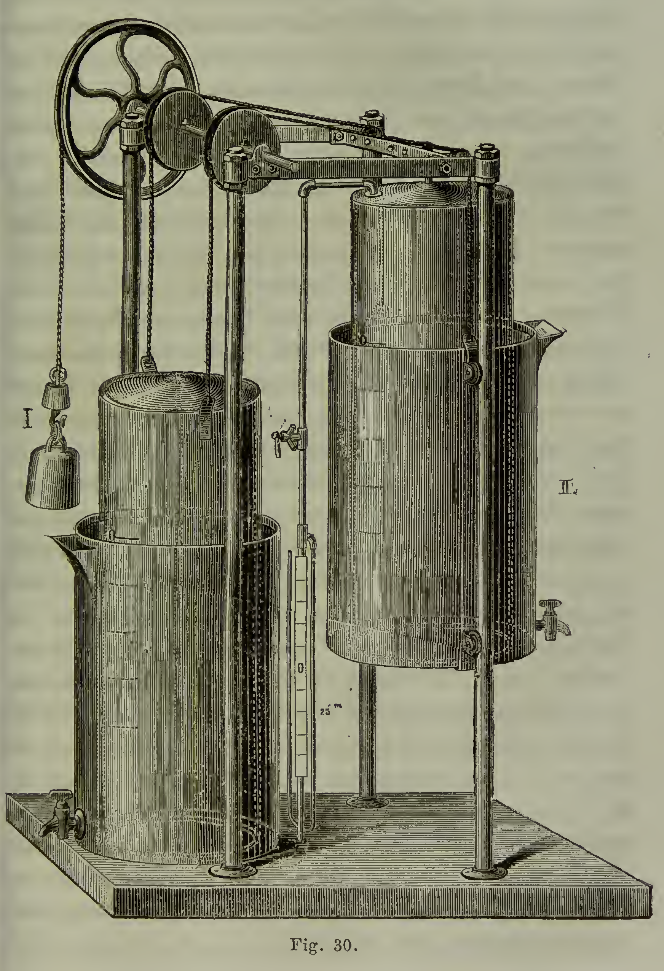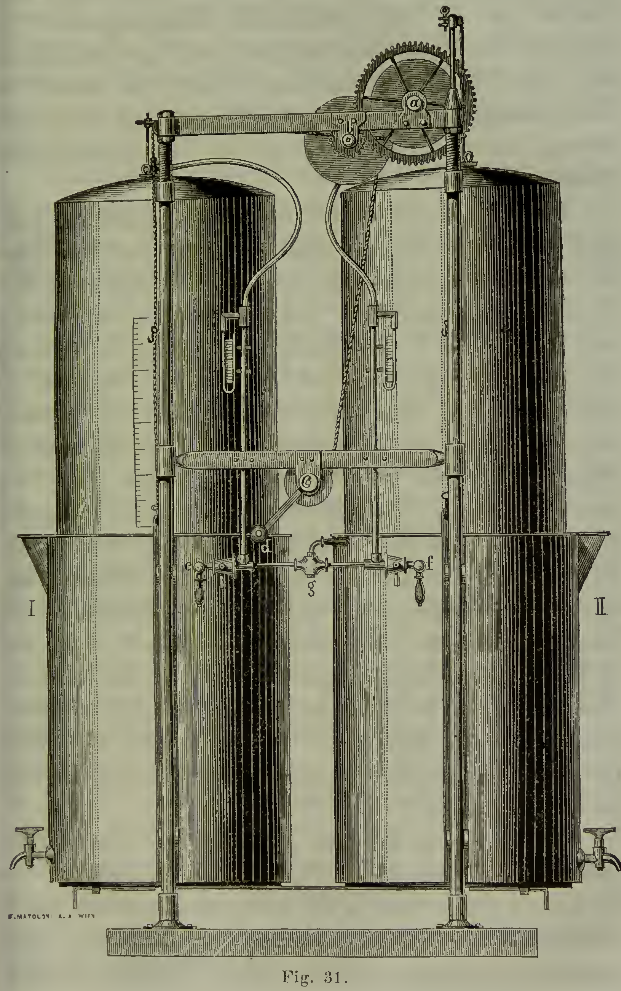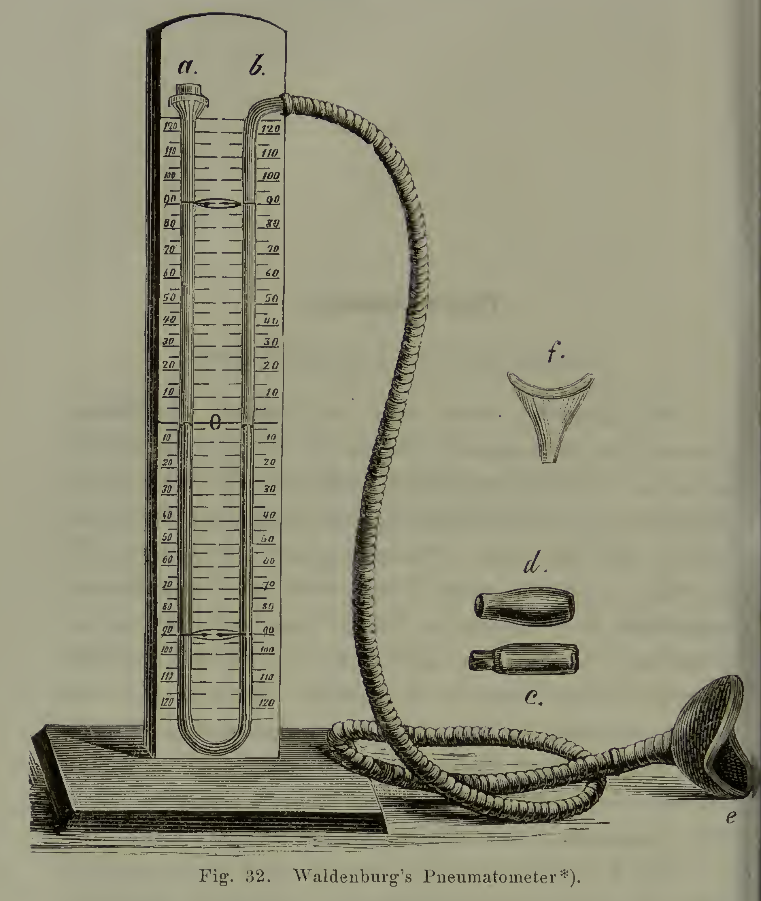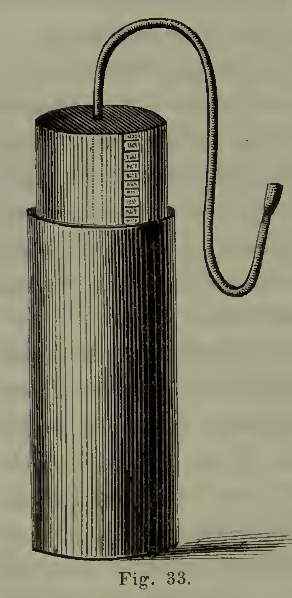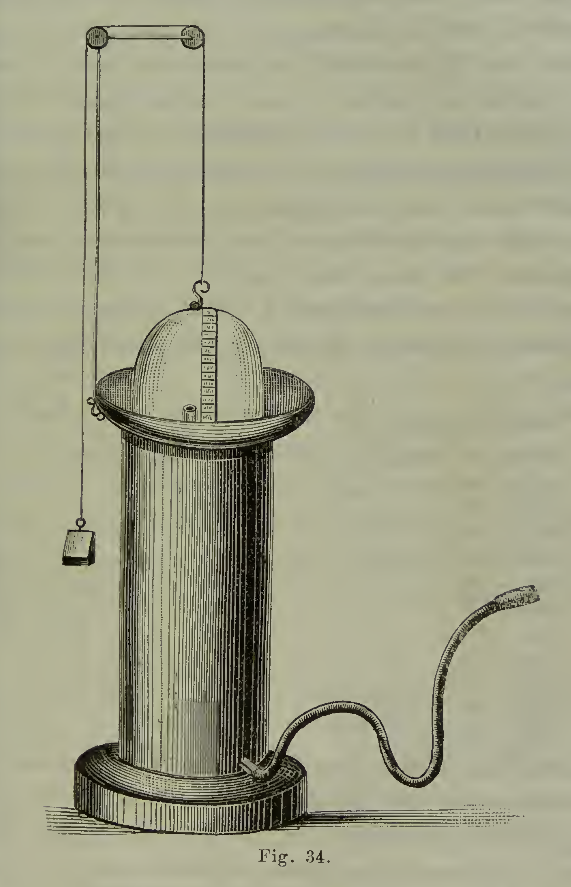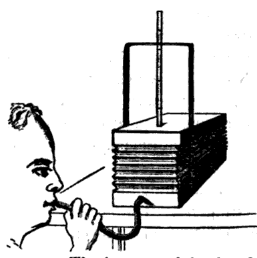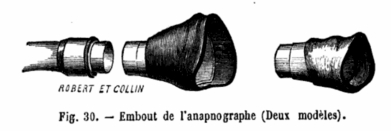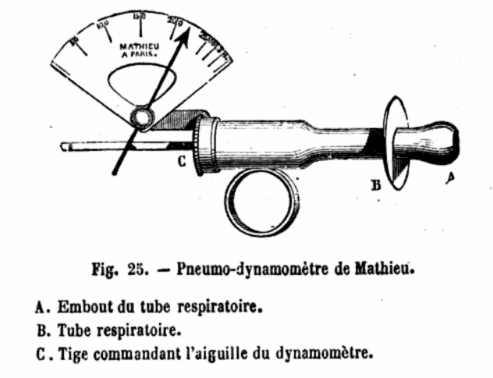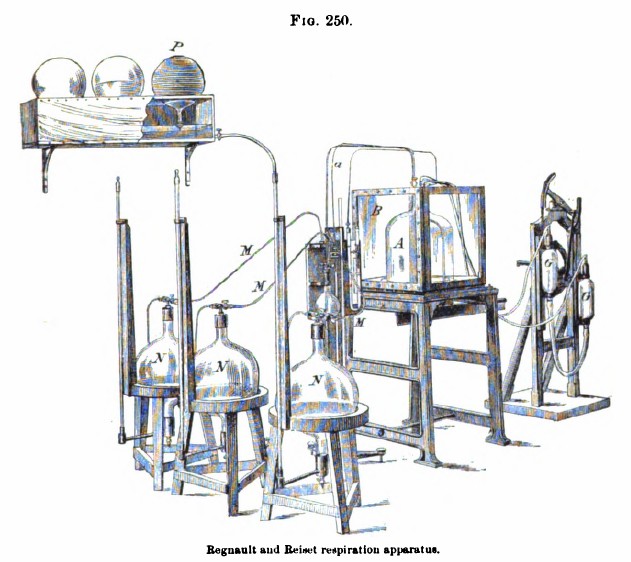
From Edgar Holden, M.D. of Newark, New Jersey: Provincial Physician on a National Stage, by Sandra W. Moss M.D.M.A., page 437.
“Dubbed a Pneumasirene, Holden’s whistle-like instrument produced an audible tone rather than registering pressure (a sirene is an acoustical instrument for measuring the velocity of sound waves). He believed his device to be an improvement on the Hutchinson spirometer for measuring lung function. Further, Holden maintained that earlier instruments had the potential to lacerate diseased lung tissue due to forceful inhalation and exhalation against a fixed resistance.”
A more complete description comes from the Maryland Medical Journal: Medicine and Surgery, 1878, Volume 3, page 105:
“Briefly it consists of a glass tube, one inch in diameter and ten inches in length with metallic end-pieces, a piston made of two disks perforated by two rows of fine sloping holes precisely like the syren of Dove, a spiral spring, and finally an index and register. Expiratory and inspiratory efficiency, both actual and relative, are recorded, and the waviness and inequality of are made evident to the ear.
“Better and of greater advantage, however, than this is the fact that use of the instrument will by constant or rather frequent use will develop chest capacity, re-dilate the cells collapsed and weakened by incipient disease, and by its allowing the free passage of air will do this without danger to the affected tissues – differing in this last particular from the ordinary pneumatometer, which however perfect an instrument for scientific observation, could hardly with safety be universally prescribed.
“Forced expiration produces a low musical note gradually growing more high and intense, but sensitive to the least changes in the power exerted, while the index is steadily pressed towards the further end, and remains in place after the effort is exhausted. The latter has now to be pushed back with the wire replacer designed for the purpose, and by reversing the instrument full and forcible inspiration may be applied with similar results. The tube being graduated, the relation as well as the power of the inspiratory and expiratory efforts may be ascertained.”
